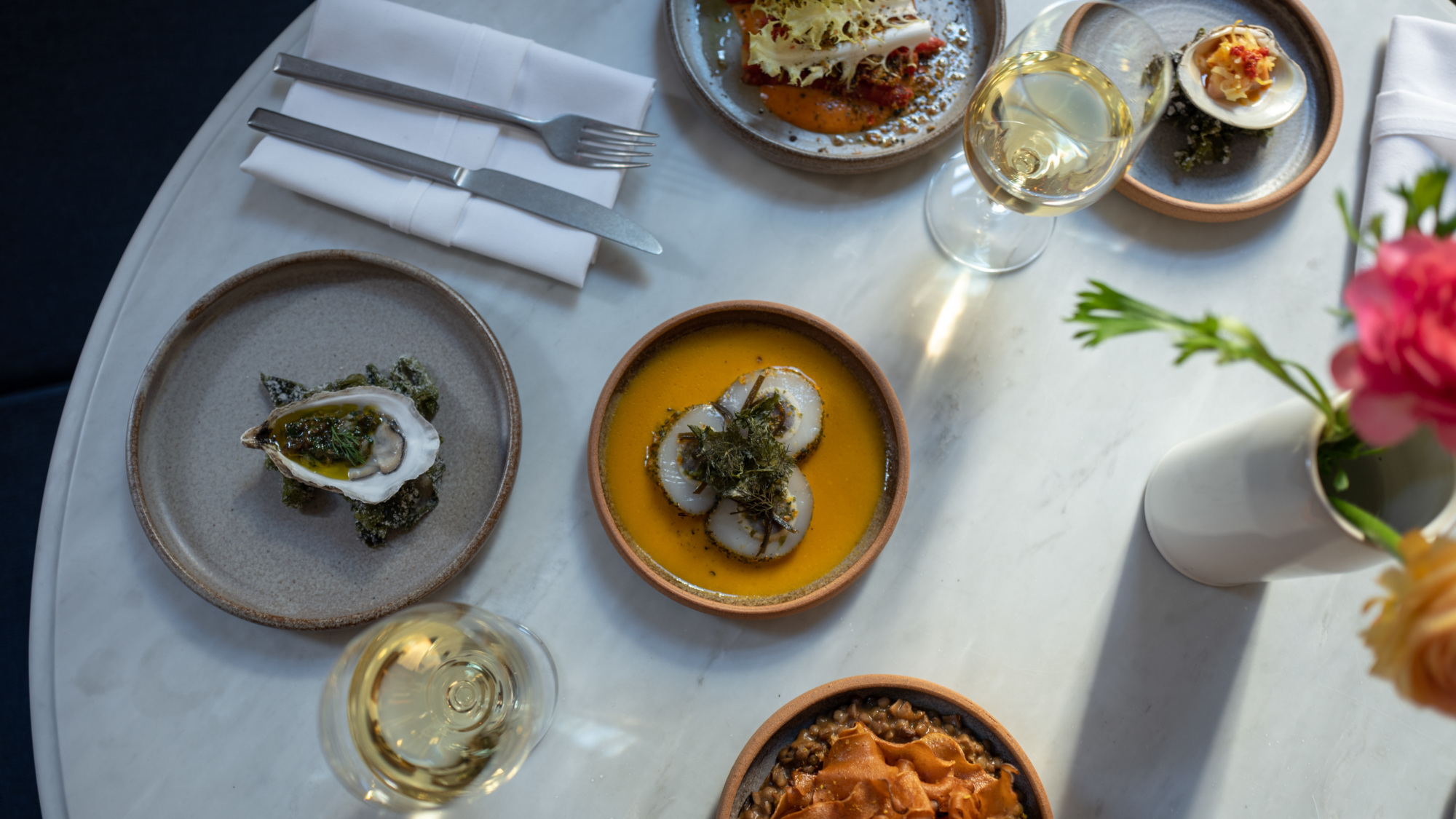
How Victoria Blamey Brings Her Unique Global Influences to Mena, in Five Dishes
Victoria Blamey is finally getting to show New York what she — and only she — is made of.
The chef has led kitchens at New York institutions like Gotham Bar & Grill and Chumley’s, and later held high-profile residencies at Blue Hill at Stone Barns and, most recently, Fulgurances in Greenpoint, Brooklyn. She left her native Chile in 2004, going on to travel and cook across Europe, Australia, and the United States, and now, she’s brought those career-long influences back to Mena. Named for her great-aunt, Filomena, the Tribeca restaurant is deeply personal to Blamey from all aspects.
“[The restaurant’s name] represents the strong women in my family,” Blamey says. “For me, my food has always been a personal view of my travels and experiences.” Having her own kitchen, she notes, has been transformative.
Mena is her first solo debut — a chance to open a restaurant on her terms, and without having to reinvent or reinvigorate a classic that comes with its own long history.
“At Mena, it’s the perfect canvas to draw all of my inspirations and experiences together,” Blamey said. “We’re creating our own community, and our own clientele, and our own little followers. It feels very fresh, and it feels comforting. I’m trying to understand that there’s just no baggage. When there’s a lot of baggage, sometimes things are really hard to move forward. But here, I’m moving forward; it’s not so linear. It’s more circular. It’s about the staff, and it’s not just about the food. It’s about the conversation, and the purveyors. It’s just different.”
Mena sits snugly on the corner of Cortlandt Alley and Walker Street, right on the edge of Chinatown. The interior is filled with gold and blue highlights, exquisite details like tiled floors, plush booths, and under-the-bar hooks.
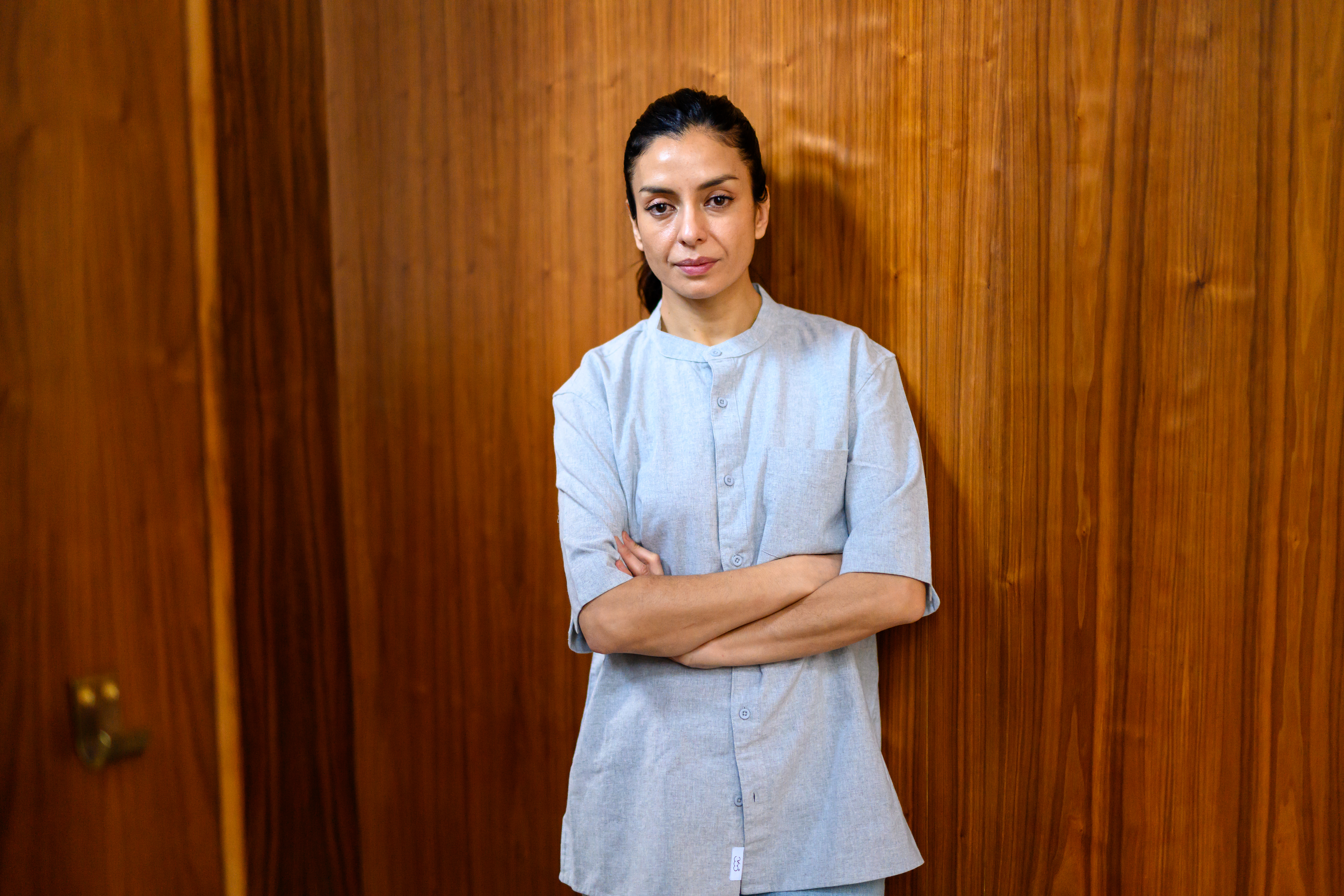

Where the décor is understated and straightforward, the menu at Mena is intricate and exciting, without being “precious,” or “esoteric,” as Blamey says. Guests can dine from a seasonal four-course prix fixe menu for $115.
“I think we’re trying to cook food that is interesting to us,” Blamey says of the menu. “We’re not an experimental kitchen, and we’re not doing experimental food, in my opinion. I just think it’s about being a little more diverse and less afraid of doing things that might not be the general public’s favorite. Not necessarily on purpose — we’re just making sure not to be so scared about food.”
There are influences from Blamey’s career woven throughout the menu — things she learned from previous restaurant kitchens — as well as techniques and recipes inspired by her travels, and even some ingredients from home. Here, Blamey takes Resy through five of the restaurant’s signature dishes.
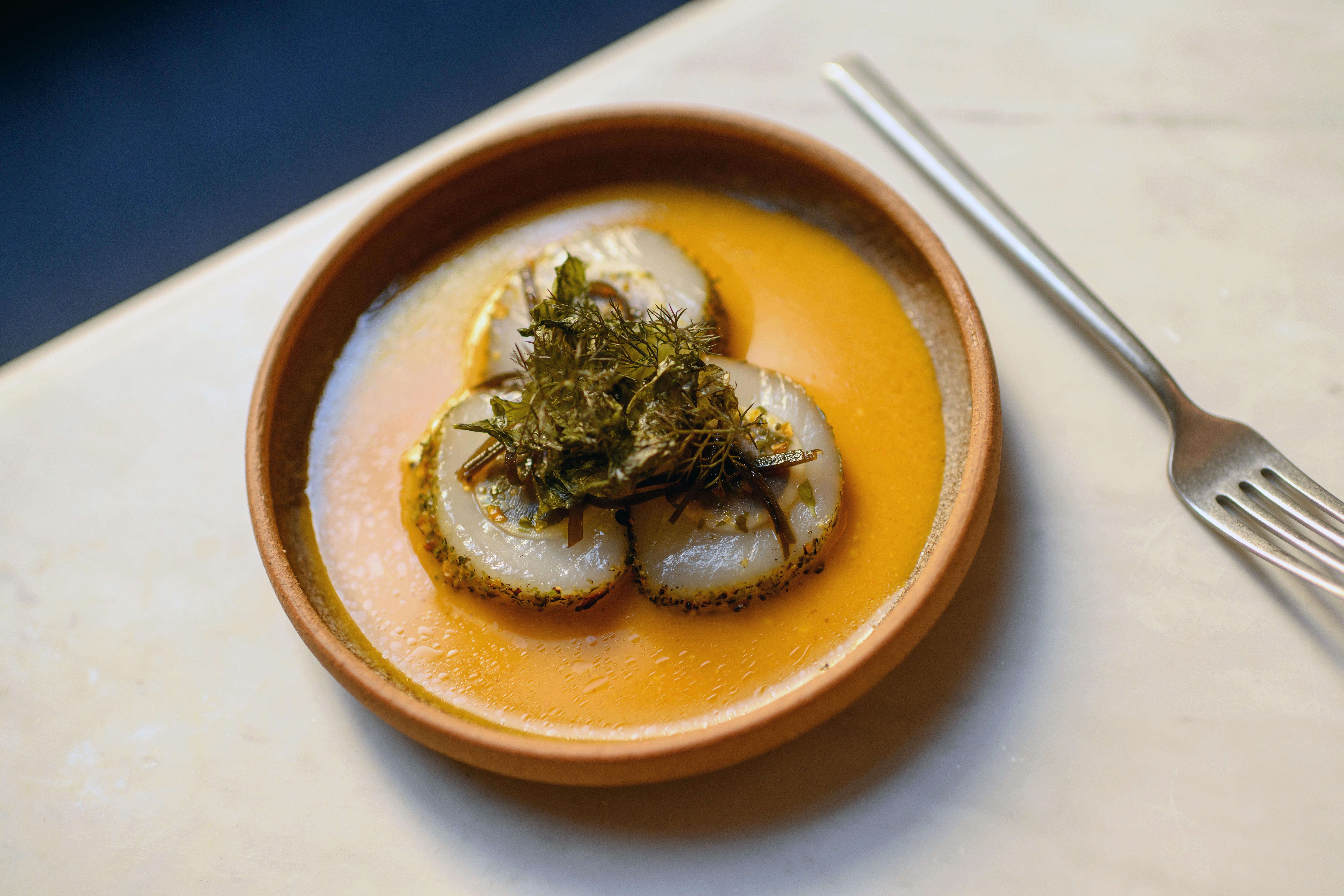
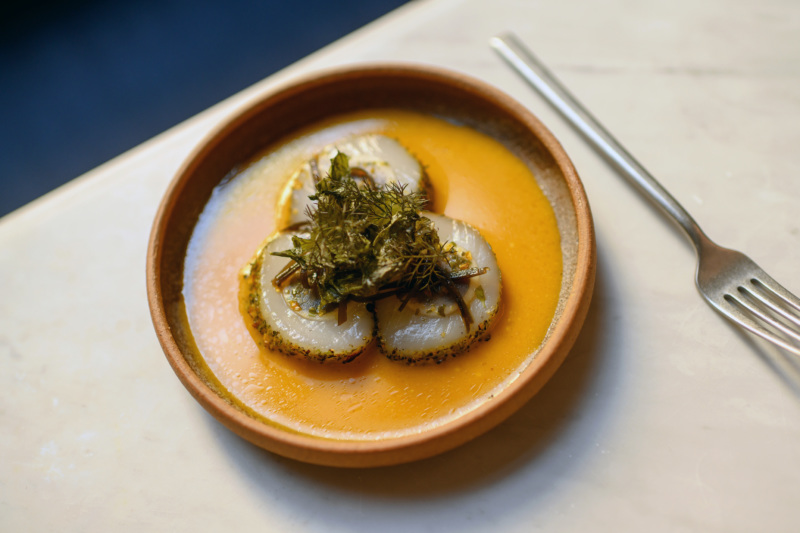
1. Massachusetts Scallop
(Squash leche de tigre and aji limon)
“The ceviche is [a dish] that was inspired by something I was doing at Gotham [Bar & Grill]. It’s very different, though.
The technique for [placing] chiles around the scallop was based around seasonality. Squash was interesting to work with for me, [especially] winter squash. I’ve had a couple of unsuccessful raw squash preparations with seafood in a few places, back when I was traveling in November, and I was just curious [about] how to make it work in a way that was good for me.
It’s spicy, it’s warm. It has three steps on the dressing. We make the shrimp paste in-house with squash. Then we make a puree. Then, from that puree we make the leche de tigre. It’s like, two bases for one dressing. We’re getting the scallops from New Jersey or Massachusetts. The chiles, in general, we got back in August from the farmers market [and we fermented]. There’s seaweed around the portion of scallop as well, that comes from Maine, and we use a few different vinegars from farms that are in Virginia. We have a little bit of shiso on top of the half of the scallop. We torch the scallop, cut it in half, and present that.”
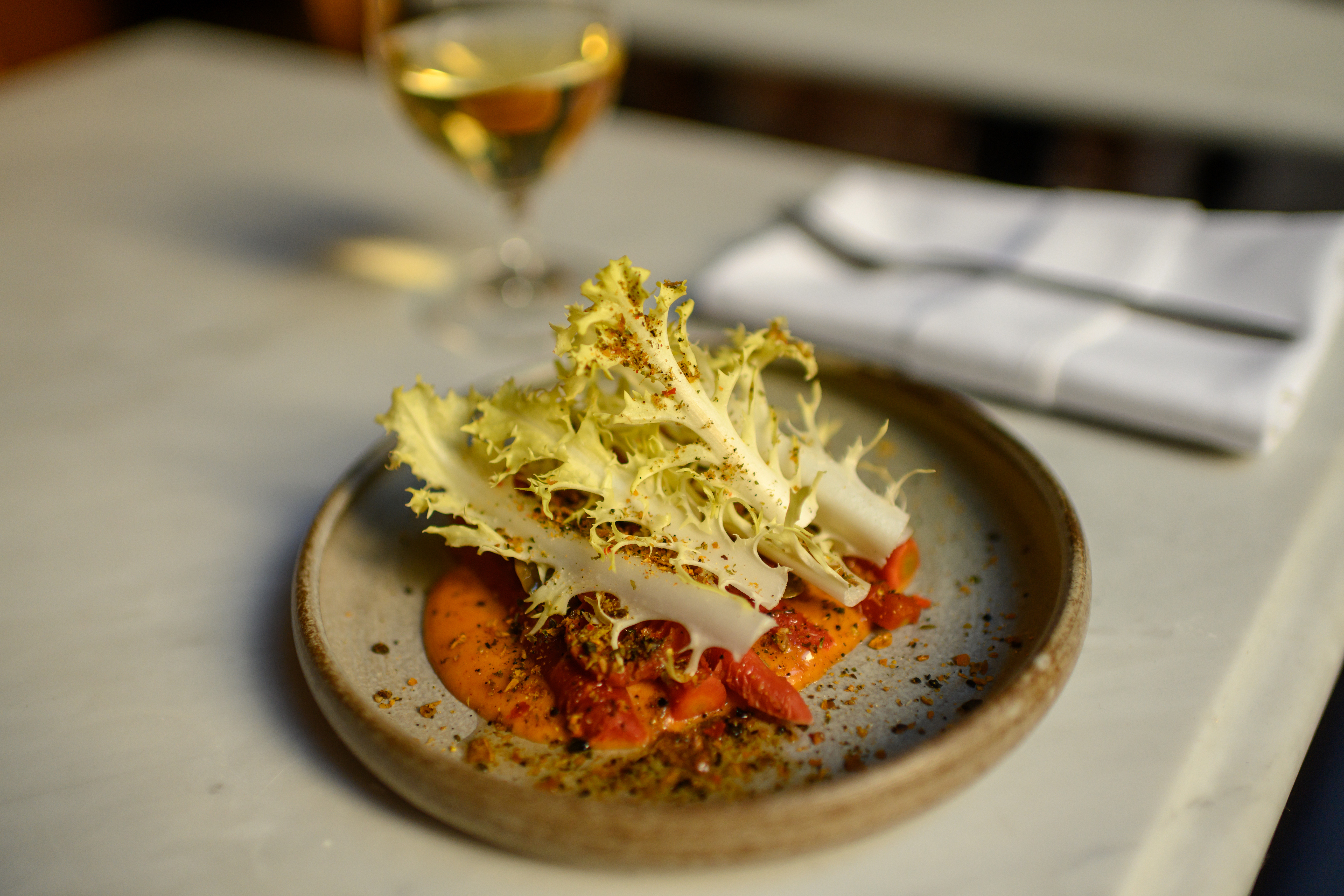
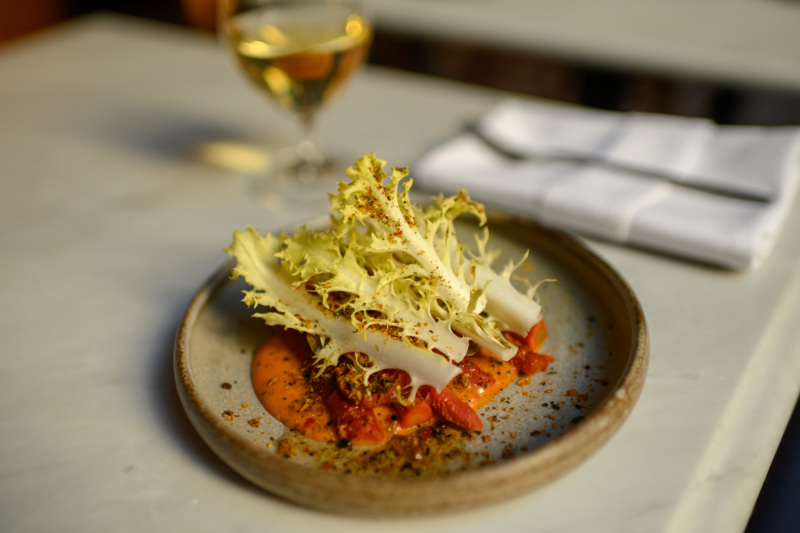
2. Kyoto Carrot
(Grenada chile, escabeche, coraline chicory)
“I wanted to have vegetables on the menu. That doesn’t mean I want to be all vegan or vegetarian, though, [with the menu].
The [most recent] season was pretty bad, [especially when] trying to find squash. It wasn’t growing really well with the farmers I was working with, and I was just trying to see what kind of vegetable we could keep on the menu. And to be honest with you, I’m a fan of carrots when they’re raw, not when they’re cooked. So, I thought ‘What would be a fun carrot dish that I would like to try and eat myself?’ And this [dish] just came pretty quickly.
They’re roasted, not cooked fully, so [the carrots] have a bit of a bite. We do an escabeche as well with the carrots, and the carrots are from Norwich Meadows Farms. It’s a special kind of carrot called a Kyoto carrot. They’re really dense, and they don’t have a lot of water, so they have a lot of flavor. The escabeche we make with chamomile vinegar and seaweed. We use chamomile vinegar, again, from Virginia. We also do a Grenada mayo, so again [using the] chiles [we got back in August]. It’s not spicy, since we fermented them. Then we have a super-fun crumble, a little play on furikake, with dried mussels, sea lettuce, dried calamansi that we got from Bhumi Growers in New Jersey, some more chiles, seaweed, and a few other ingredients. Then, we finish up with the coraline chicory.”
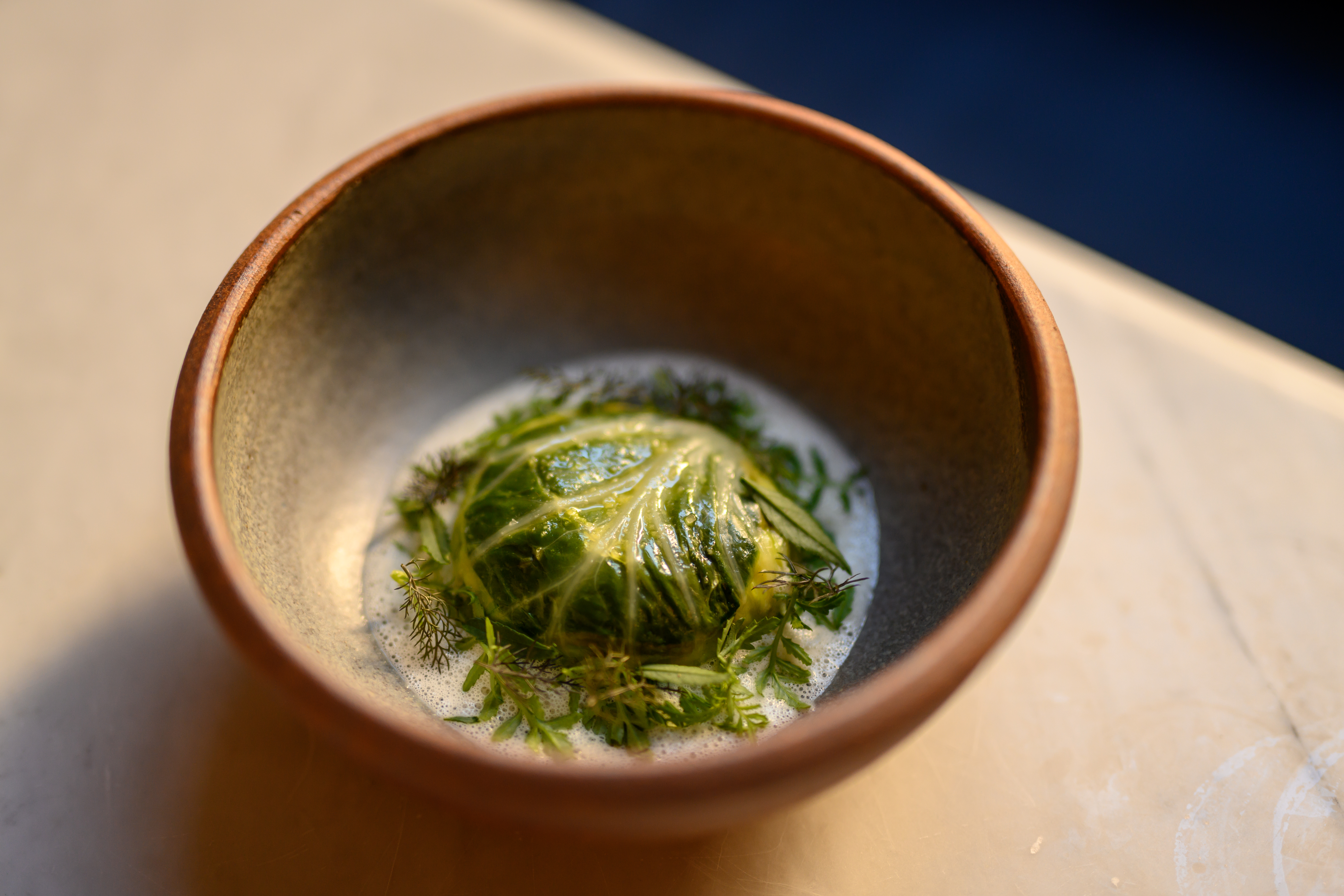
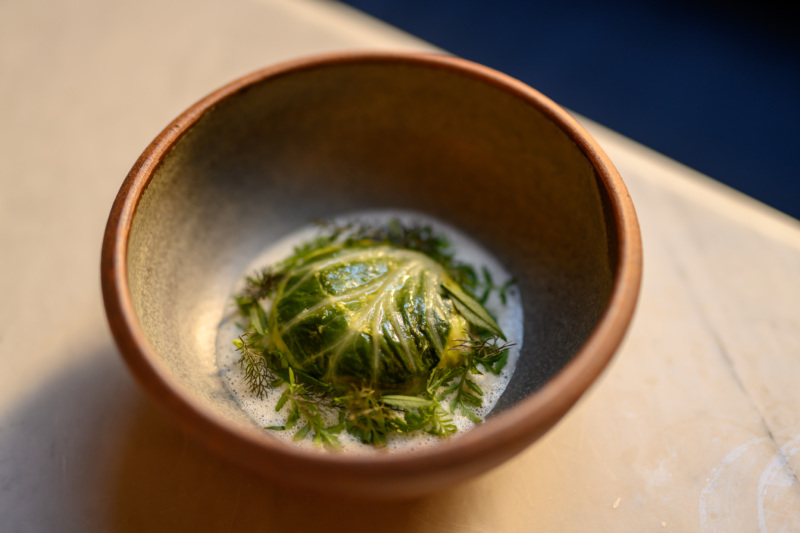
3. Chou Farci
(Scallop mousse, sea lettuce, and vin jaune)
“This one is funny. We were working on a monkfish for the longest time, wrapped in seaweed with this scallop mousse. We kept going back thinking that we liked it, but we were not extremely happy with it. So, I said ‘You know what? What if we start working on the mousse itself?’ Our executive sous chef Daniel Garcia has this really good recipe, so I said, ‘What if we make it around the mousse?’
Then I thought it would be fun to do a play on chou farci, which is always with duck or pork, but to make it with seafood and seaweed. We do layers of sea lettuce, chard, and the mousse. We incorporate dried scallops in that mousse so we can have more of a flavor of scallop. That’s a full-on Chinatown inspiration [from the dried scallop].
Then, we add some lime zest just for aroma and perfume. The layers of the sea lettuce are punched out, so you have to build it, and wrap it in Savoy cabbage. You have to steam that. The sauce is a vin jaune that we make into a foam so it’s airier and lighter. We do a pretty simple basic recipe, using some dashi. We finish with succulents to give you texture on the bite. And then we put a tiny bit of caviar on that since the umami flavor is really beautiful.”

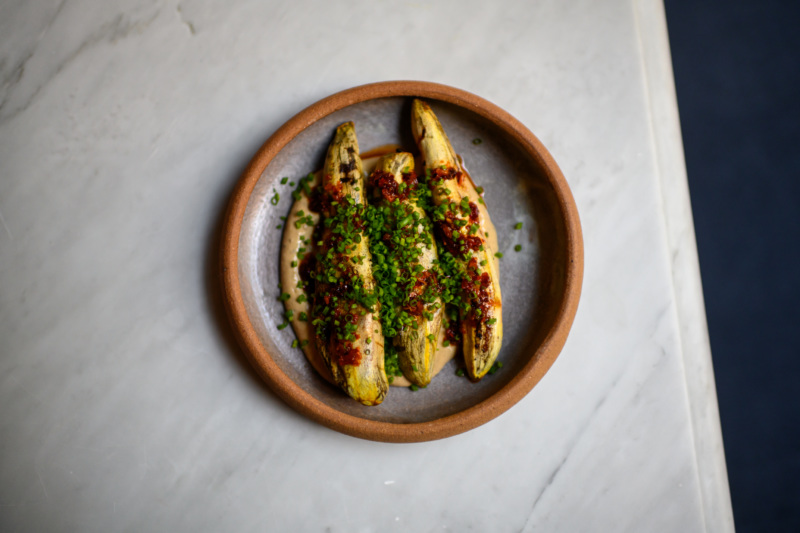
4. Fingerling Sweet Potato
(Plantain and fermented Aleppo)
“We worked on [this] for a while. It was a little sweeter, and didn’t have the [right] texture, so we were working on that flavor profile for some time. Then we added plantain; I was really inspired by plantain when I had a good dinner at one of the restaurants I visited in London.
To make this dish, we take a little bit of the meat [from the sweet potato], and we leave some on. The plantain is grilled for a minute and goes underneath the sweet potato. There’s a dressing of black fermented beans, miso, white sesame paste, and lemon juice as well for acidity. We have some Aleppo peppers that we got from Norwich Meadows Farm in August. We fermented them, and then we dehydrated them. They had quite a lot of brininess and acidity that was really nice, so we made a dressing with that, and add some garlic, and yuzu. Then it gets topped with a little spice, and finished with chives.
A lot of people really like it; it’s sweet, but crunchy with the sweet potato.”

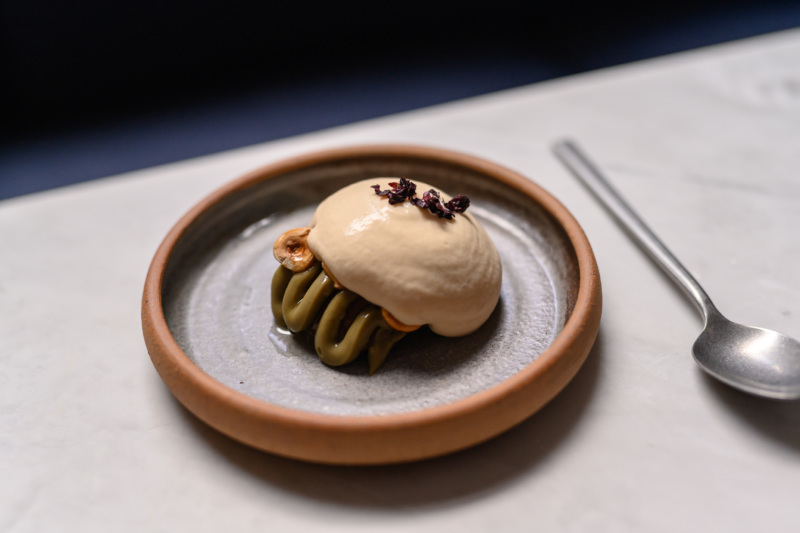
5. Milk Cloud
(Seaweed ganache, kelp butter, and Chilean hazelnut)
“This is something that I’m bringing from my residency at Fulgurances. I wanted to do a ganache with seaweed. It’s basically just a straight-up ganache recipe, and the seaweed is in the cream. The chocolate is really fun; it’s 82% cacao chocolate from an interesting farm in Colombia, [and it’s] very fruity. It goes really well with the umami of the kelp, so we infuse kelp into the cream. Sometimes we do Irish moss.
The seaweed comes from Maine, but it’s dehydrated. We make a kelp butter, so we cook kelp with a little glucose for two days. We steam it and then we make a puree of that and include a lot of butter and a little bit of salt. That goes next to the ganache.
Right now, we’re using Chilean hazelnuts that my mom brought, actually, from Chile. They have a lot of oil, and they also have a really nice crunch. We finish that with a spoon of milk sugar cream infused with raw sugar, also from Colombia.
The dish in general is not very sweet, it’s a good dessert for people who don’t like sweet desserts. It is rich, so we’re making the portion a little smaller. It’s finished with dulse seaweed, of which the texture and structure is quite different [than typical seaweed].
We dehydrate the dulse seaweed really quickly, spray it with water and massage it with whole grain sugar. We do it for a whole day in the walk-in, and then let it dry out and get it sticky. It gets a little sweet, a little savory, and then we top it on up.”
Mena is open Tuesdays through Saturdays from 5:30 to 10 p.m.
Ellie Plass is a freelance writer based in Brooklyn. Follow her on Instagram and Twitter. Follow Resy, too.
Discover More

Stephen Satterfield's Corner Table















